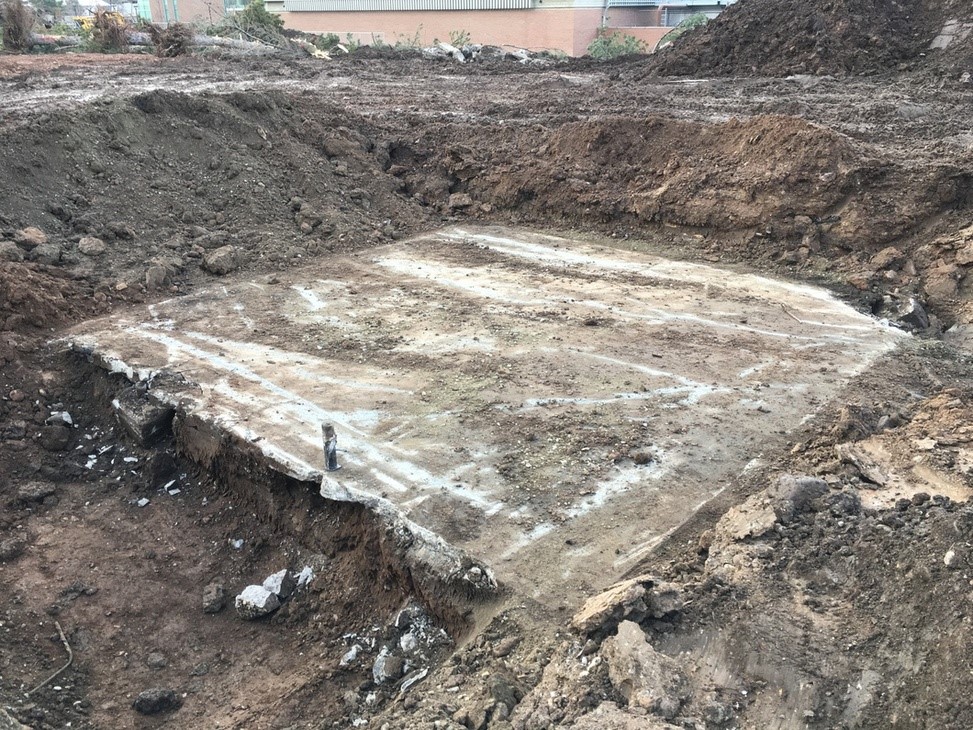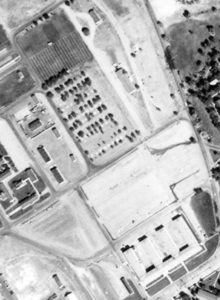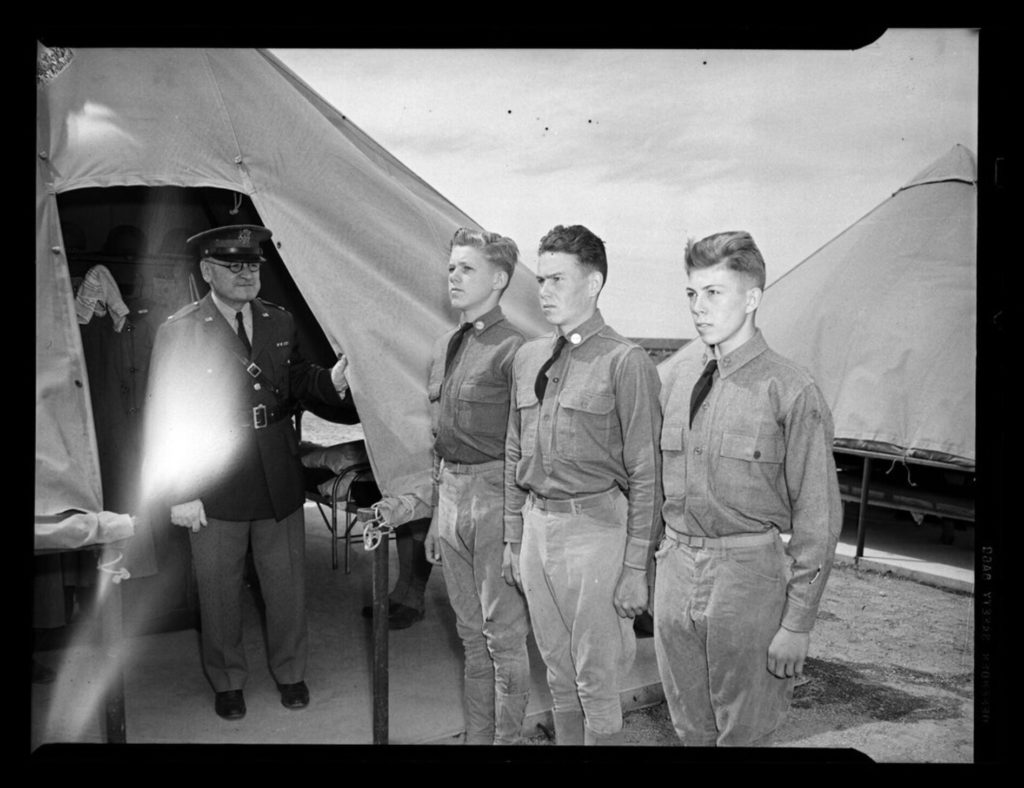Charles Shepherd, Historical Architect/Campus Planner, University of Utah

The need for housing is as common a story at the University of Utah as is the fighting for parking spots. On a snowy day in November 2018, the U of U’s newest housing project encountered a 15’-8” square concrete pad, 4”thick, and with steel pipe sleeves on each corner. Within a month, a total of seven were encountered, all preserved underneath a soccer field installed in 1989. As the U of U is a state university, the Campus Planning Department worked with the State Historic Preservation Office under the state cultural resources law to document and mitigate this discovery.

Few people realize that the vast majority of the U of U’s campus is part of the original Camp Douglas (later Fort Douglas) Military Reservation, established in 1862 by President Lincoln. Over time, large swaths of former Army lands transferred to the ever-growing U of U, especially during the education and population boom after World War Two. These former Army lands contained, and still often contain, tangible reminders of the previously military usage of the east benches of Salt Lake Valley.
In 1937 and 1938, members of the Works Progress Administration, a Great Depression make-work program that employed tens of thousands of young men around the nation, built 42 concrete tent platforms behind what is now the Huntsman Center. These platforms were used for only a few years before World War Two as part of the Citizens Military Training (CMT) program.

During the presidency of Woodrow Wilson, the National Defense Act of 1920 authorized the creation of a program to train young men, ages 17-29, in basic military techniques. Fort Douglas hosted many of these month-long camps before the formalization of the concrete tent pads in 1938. By the start of America’s involvement in World War Two, over 400,000 men had went through this intensive training and likely improved the nation’s readiness for the conflicts to come. An example of a similar CMT training certificate as would have been used in Utah was made available online by the Texas A&M University-Corpus Christi. After World War Two there is no mention that these platforms received any more usage at Fort Douglas, though likely used periodically by the National Guard or other groups receiving basic training before the lands transferred to the growing U of U.

Hundreds of young men from Utah, Nevada, Idaho, and Wyoming came to Fort Douglas and lived in these tents during the hot summer months before returning home. But for over 80 years these concrete pads and their history was buried beneath buildings, grass, and soccer fields, as the preparedness mission of this area shifted from military to education. The U of U will erect an interpretive panel near the new housing units detailing this history, to ensure that future generations of young people receiving education at the institution understand the history under their feet, and the shifting use of Salt Lake’s east bench.














